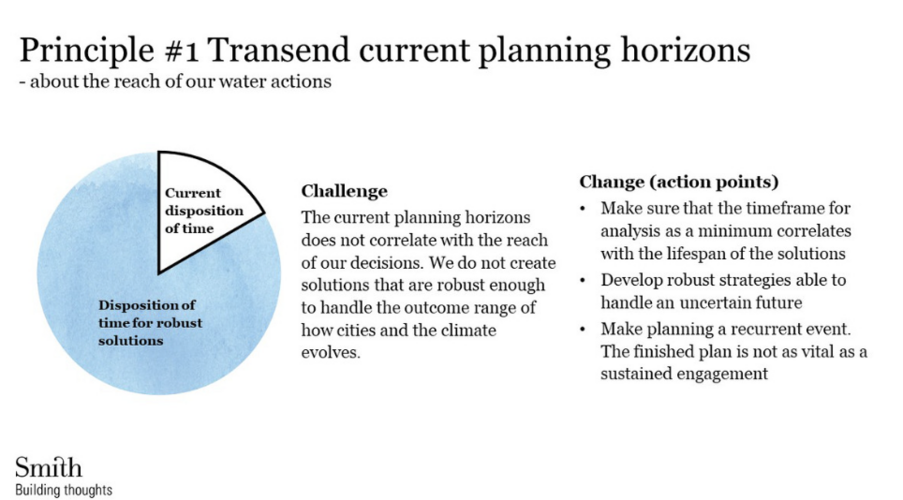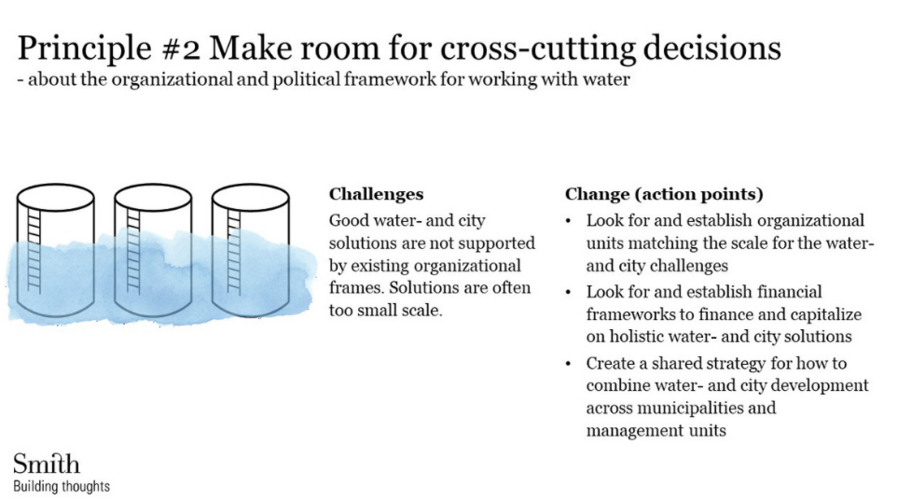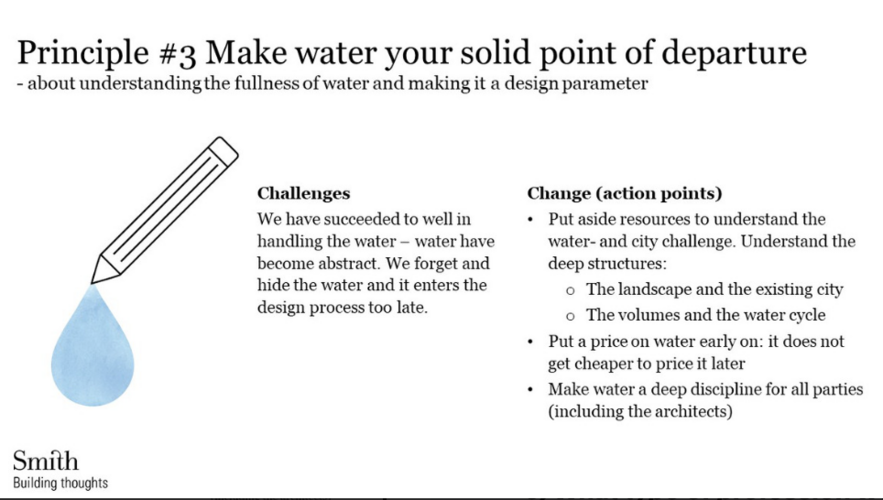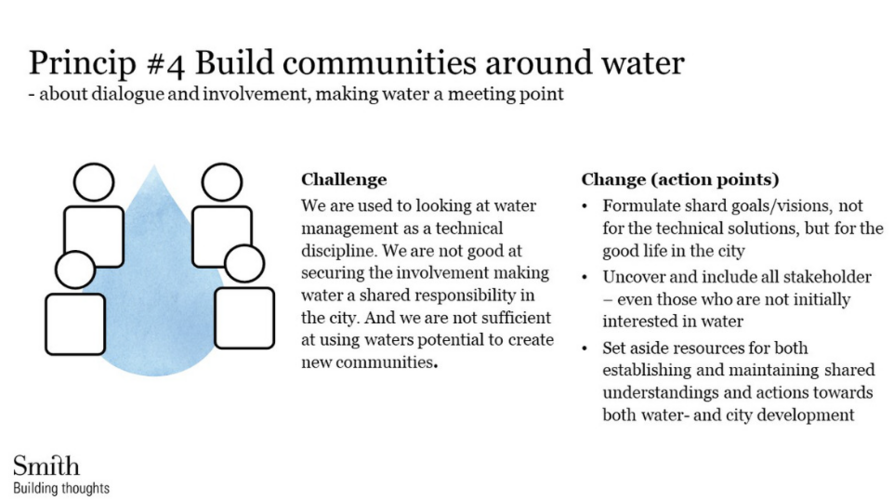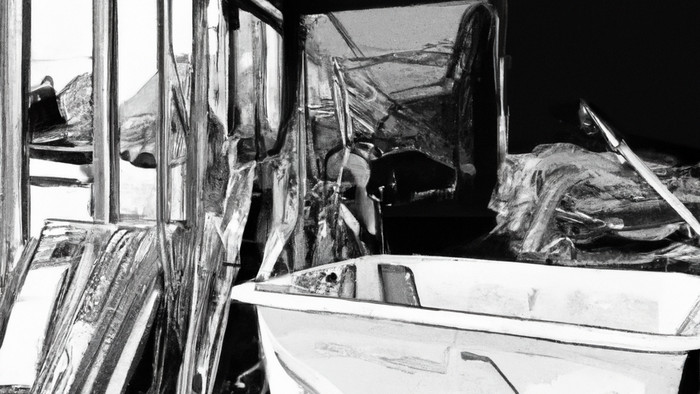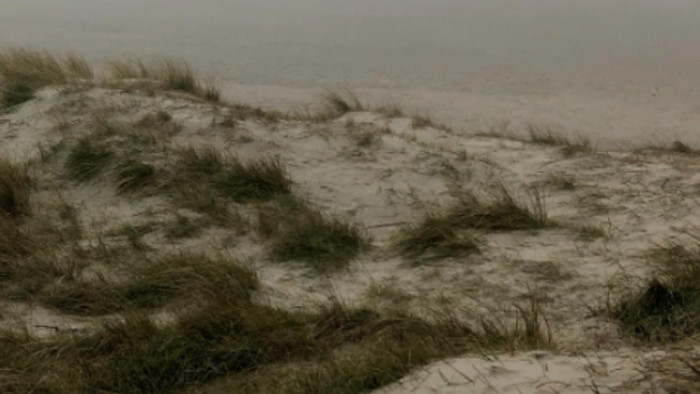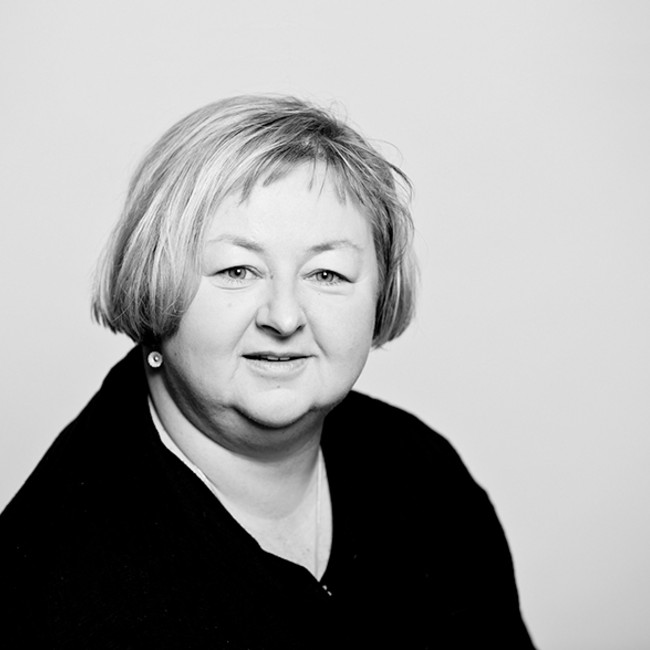
Watercities Blogpost 1/5
The first one is Lykke Leonardsen, Head of program for Resilient and Sustainable City Solutions at City of Copenhagen
1) What climate-related challenges have been solved particularly well in Copenhagen? And what are your perspectives on the urban development in Copenhagen with water as a key parameter?
I think that what is the biggest success for climate adaptation in Copenhagen is the basic fact that it has become the backbone for the development of the city!
Managing climate change is no longer an add-on – it is part of the mainstream development of the city.
So when we need to protect the city from future storm surges, this is done as part of the urban development through the construction of a large artificial island that will not only protect the city from flooding, but also be the home for 35,000 new Copenhageners and a large new nature area. And when we need to protect the city against the impacts of heavy rain, we have developed a cloudburst management plan that not only focuses on storm water management, but also on the development of new green areas, meeting places for the citizen and a lot more. So, it is not just about fixing a problem – it is about using the challenge to create opportunities for improving life quality both now and in the future. This is unfortunately not the situation in other cities. In many cities climate change is considered as something disconnected from the general urban development. It is perhaps something that can be fixed by building a higher seawall or an extra underground reservoir for storm water. And of course, it IS easier to get adaptation higher on the city’s agenda if you have had a taste of what climate change will mean – like a superstorm or a huge cloudburst.
And what did it take to get there? We have in Copenhagen been able to illustrate the co-benefits of adaptation, we have demonstrated that we can get the adaptation we need AND at the same time and for more or less the same price we can get the physical improvement for the city. This gives short term benefits (new green spaces and physical improvement) and long-term benefits (reduced risk of flooding).
Providing the business case and illustrating our vision in a clear way definitely helped us!
We were able to present the vision of a Copenhagen that could still be a thriving, green city AND be able to manage a 100 year storm. And finally, it also helped to have a number of massive cloudbursts that clearly illustrated the massive impact climate change will have on the city. It definitely made it easier to get political back up for spending 1.6 billion Euro on a cloudburst plan that we could show that one cloudburst alone had led to damages estimated to just below one billion Euro.
2) From the perspective of your profession what are the biggest challenges of planning the green, gray and blue cities of tomorrow?
I think the biggest challenge is to have green, blue and gray mainstreamed into the planning. And this is about getting the different stakeholders in the city to work together – to develop a joint vision where they can all see themselves.
The traffic planners are just as much part of finding the solution as are the sewage engineers or the landscape architects. We need them all. But they speak a different language and they need to be able to understand each other. They need to be able to see things from each other’s perspective. This is especially a challenge when you are working in the built city where the fight for space is hard.
We have to have room for traffic, for shopping, for green, for infrastructure above and underground, for housing and all other aspects of urban life. And on top of that we now also need to have room for adapting the city to a changing climate. So we need to think together in order to solve this challenge. It can only be done by developing multifunctional solutions.
Another big challenge is financing.
Just like we have divided our public sector into silos, we have also divided the financing of the sector.
So there is one box of money for sewage work, one box for bikes, one for cars, one for parks and one for sports. But when we need to make a solution where we are creating multifunctional solutions, we also need these types of financing from different boxes to work together. And that is IF we have the money. So many of the world’s cities do not have the money to develop and implement the right solutions. They depend on donors who do not always have the best interests of the city at mind. So we also need to make sure that the cities of the global south get a fair share of the investments.
3) In relation to the previous question which of the following proposed action points for Water Wise Planning do you think are particularly important to work with?
#1. Transend current planning horizons
#2. Make room for crosscutting decisions
#3. Make water a firm reference point
#4. Build communities around water
Climate change will be a huge challenge for cities – and working with both mitigation and adaptation can provide some possibilities for making choices that will have a great impact – across sectors. But these decisions will not always be popular. So, in order to move forward we need politicians with the courage to take some of the innovative and perhaps sometimes unpopular decisions – and we need to make sure that they can have the best knowledge basis for these decision. That also means that the city staff must work together in order to procure this knowledge.
4) What are the good examples of solutions to these challenges?
In Copenhagen we have had the benefit of having a plan that is fully financed, but other cities are not so fortunate. They are working their way towards more or less the same goal with smaller steps. One example of that is Amsterdam with their campaign for “Every Drop Counts”. Another interesting example of how cities might need to redirect their work is Philadelphia in the United States. They originally aimed at solving everything with green solutions, but recent events and new data have caused them to change their course and adding grey infrastructure to supplement the green for the more extreme local events.
5) For the IWA World Water Congress & Exhibition 2021 a high-level summit will be held. What do you think, are decision makers’ most important task in order to succeed in what you described so far?
Actually, this starts before the summit. Because we need a cross-sectoral audience in the summit.
The decision makers greatest task is to reach beyond the water sector! They need to stop regarding climate change as something that can be solved by the water sector alone. They need to work across sectors with urban planners, designers, local communities etc. in order to create the sustainable city of the future.
